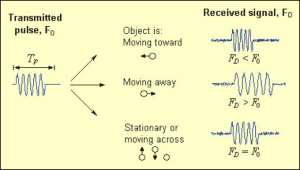By Elizabeth Comer
As part of the OSNAP array, the Extended Ellett Line (EEL) is a repeat hydrographic section that crosses between Iceland and Scotland. This line measures part of the Atlantic Meridional Overturning Circulation in particular capturing the majority of warm water flowing northwards from the Atlantic into the Nordic Seas and around half of the returning cold deep water (Figure 1). The heat that is transported northwards is released along its journey transferring heat and moisture to the atmosphere. The amount of heat being carried determines how much is released, therefore making it an important factor in climate predictions. By making measurements along the EEL we can investigate the currents’ structure and long-term changes in heat and freshwater transport. The EEL provides the perfect platform for investigating the heat and freshwater changes over time through its yearly measurements over 40 years.

Figure 1. A schematic of the Atlantic Meridional Overturning Circulation (Curry and Mauritzen, 2005).
The EEL has measured velocity from the ocean’s full depth using an instrument called the Lowered-Acoustic Doppler Current Profiler (LADCP). This instrument is lowered through the water column and relies on the changes in return frequency of acoustic pulses to determine the water’s speed (Figure 2). The LADCP data is an exciting chance for us to see the in-situ velocity of the entire water buy valtrex australia column. Combining this velocity and hydrographic salinity and temperature measurements from each survey will provide the heat and freshwater transports across the EEL.
This is the research that I am currently carrying out and alongside this I will be taking part in the 2016 EEL research cruise, which requires being at sea for a month. So far, I have only been on weekly length research cruises so this will be a first and exciting experience for me. I am not only looking forward to collecting and processing my own data, but joining in with other scientists and learning new methods of data collection. Another first for me will be attending the Ocean Sciences Conference in New Orleans this February. This will be a great opportunity for me to meet researchers in my field, share experiences with other early career scientists and gain feedback on my research. These experiences will both not only enhance my learning, but build my confidence when explaining my research to different audiences.
